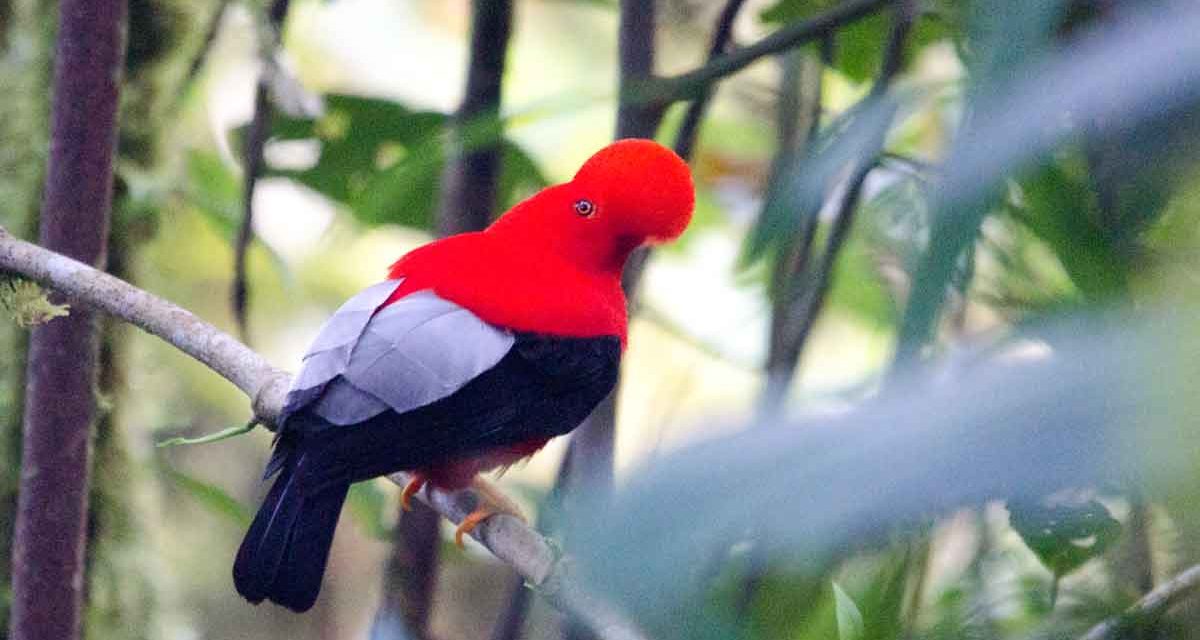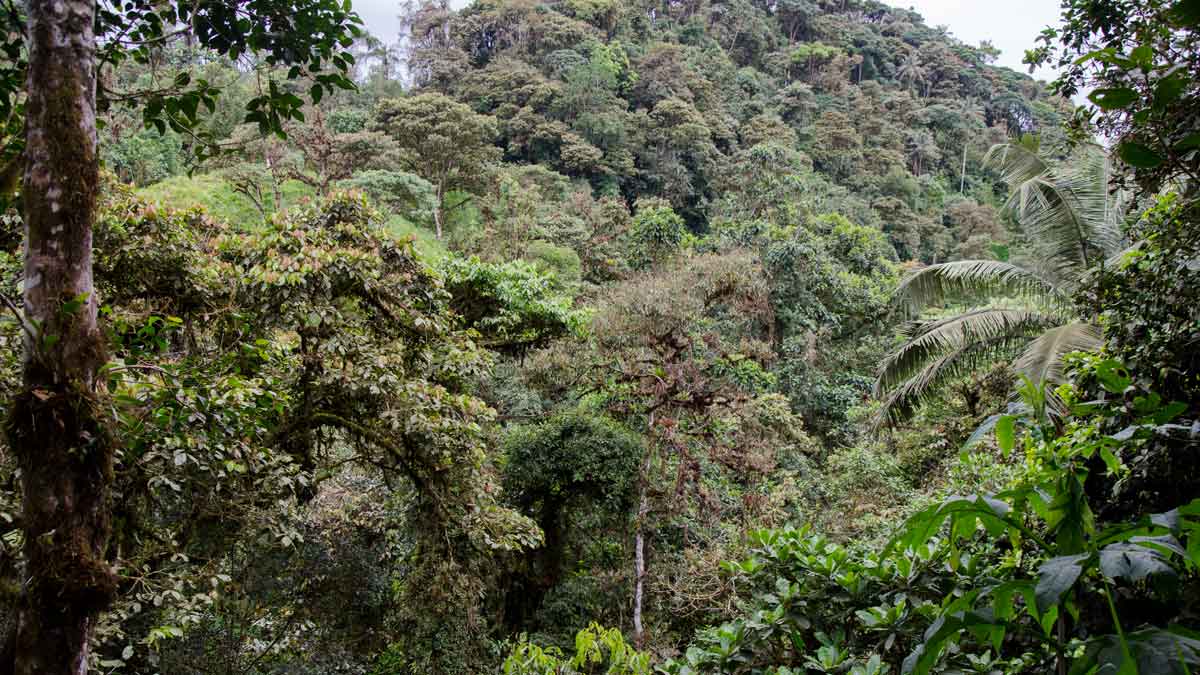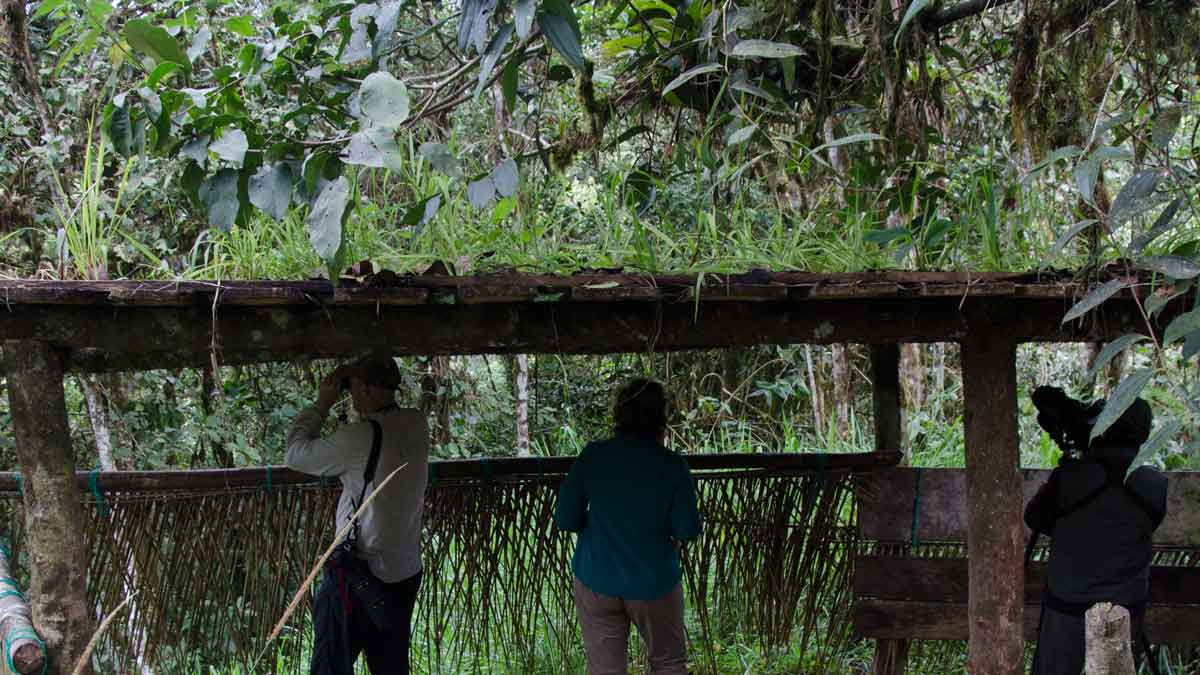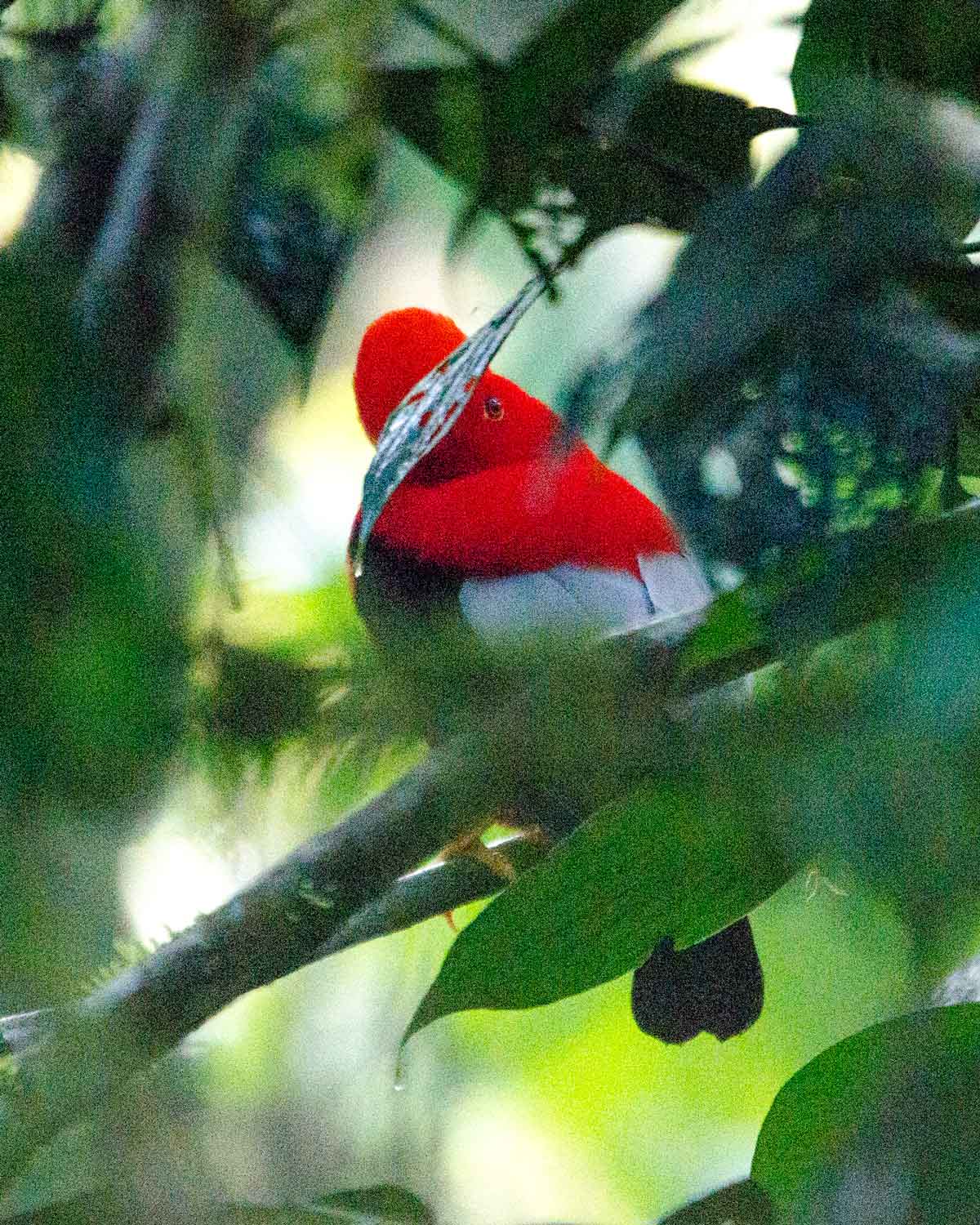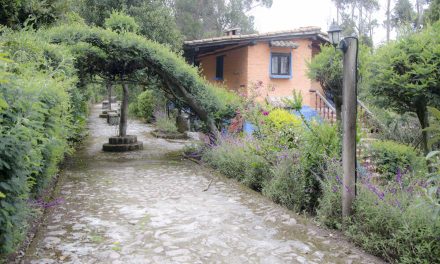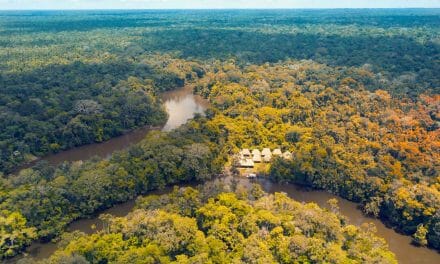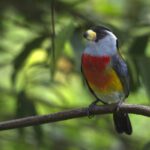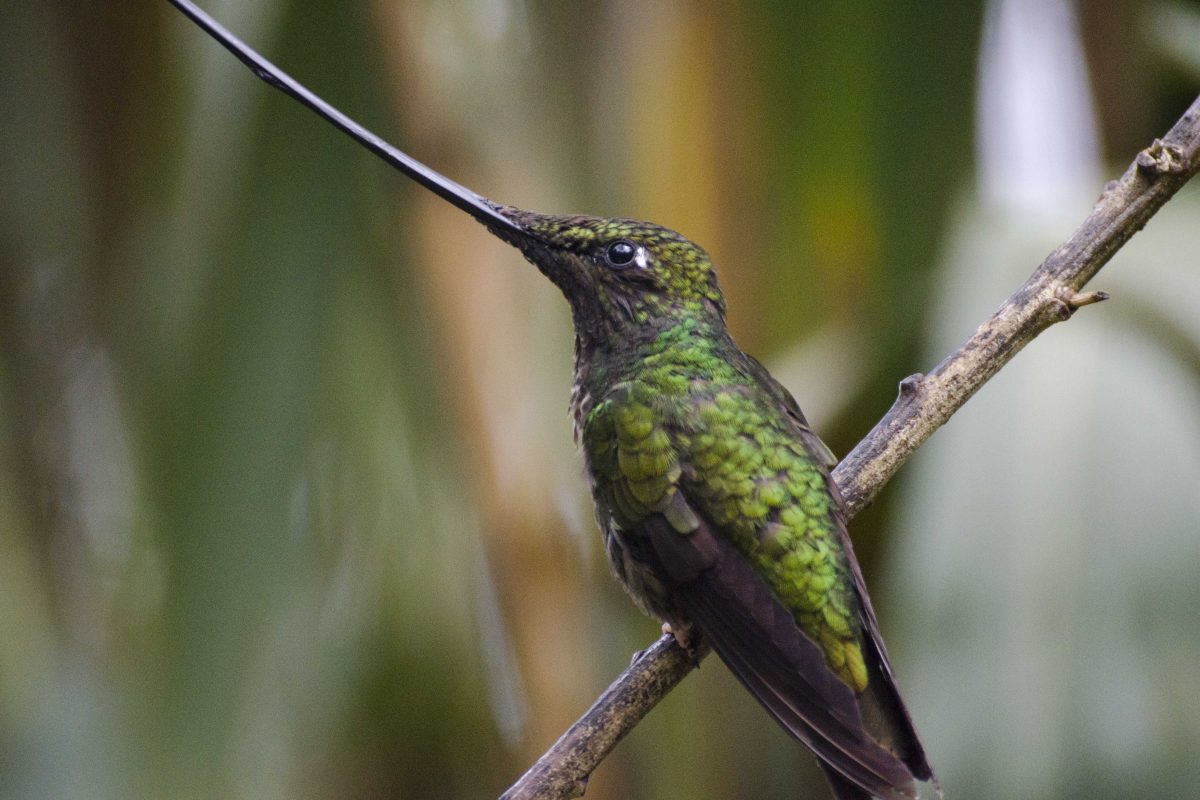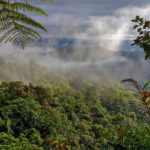In the pre-dawn morning on a muddy backroad that eventually leads to Mindo, we found our guide, Angel Paz, waiting in the dark. We were off to see the famous Andean Cock-of-the-Rock, the West Slope sub-species. This strange-looking bird is a bright scarlet red, with striking black and white wings, a jet-black tail, and amber eyes set on opposite sides of its bouncing bobble-like head.
Males flock to their favorite trees, called a lek, before dawn or dusk and make a raucous sound, showing off to each other and sometimes to potential mates. The display only lasts about twenty minutes on an average day. Females, muted in both color and sound, are less likely to show up except during mating season which takes place before the winter rains. When the females arrive, the males appear in droves, with as many as forty birds competing for the attention of a single mate.
The Popularity of the Andean Cock-of-the-Rock
The Cock-of-the-Rock has become a checklist species for hundreds of international birdwatchers arriving in Ecuador every year. Finding an easily accessible lek has become a full-time job for many guides. Having a lek on or near your property can mean the difference between just making a living and being world-famous.
Angel has access to two leks, though neither are on his own land. Instead, he rents these sites from neighbors, experimenting with a new concept in sustainable tourism in Ecuador. Angel knows the importance of protecting these places.
Unfortunately, he learned the hard way. According to guide and photographer Luis Alcivar, when birdwatchers first flocked to Angel’s land, they wanted better pictures of the morning ritual and asked to use flash photography. Like many Ecuadorians, Angel wanted to accommodate his guests. Those early morning flashes of light were enough to lose him a lek. The birds stopped coming and moved to his neighbor’s land.
The Angel Paz Experience
The hiking trail is short and easy to navigate in the dark. We arrive at a blind setup with a view of crisscrossing tree limbs about twenty feet away. We start the photographer’s ritual: set up tripods, change lenses, set our ISOs to the highest speeds, snap a few practice shots, talk about tricks to maximize any available light, and wait. Angel disappears. He is off to collect the next group of visitors. When they arrive, our roomy bird blind doesn’t feel so roomy anymore.
Angel is extra cautious. He asks visitors to speak in hushed tones if they must speak at all. Anyone wearing bright clothing, especially red or white, is asked to cover up or remove the offending item. And, no surprise, he has banned flash photography.
We hear the birds before we see them. Their unique call sounds like a cross between a crowing rooster, a croaking frog, and a buzzing cicada. As the sun rises, so does the cry of each and every Cock-of-the-Rock. Reverberating squawks permeate the air and finally, we begin to see flapping wings and flashes of red among the dark green leaves.
It doesn’t take me long to abandon my tripod. I am an impatient photographer at best and these birds demand attention. Using the blind to stabilize my camera when need be, I thread in and out of fellow birdwatchers, snapping when I see a possible shot and wishing that these birds loved daylight just a little more. Angel taps me on the shoulder, leading me to a different place in the blind before pointing to a nearby branch and a perfect view of a beautifully plumaged Cock-of-the-Rock. Angel knew how much I wanted that photo.
In fact, I think Angel has made an impact on the birding world not only by protecting an endangered habitat on the West Slope of the Ecuadorian Andes but because he wants each and every visitor to walk away with a positive experience. If you let Angel know what you hope to accomplish in a visit, he will do everything in his power to make it so.
As the sun comes up, the Cock-of-the-Rocks lose their bravado. One by one they take flight, heading into the cloud forest in search of today’s meal. They may meet in a favorite fruit tree or two but it is rare to see a flock during the day.
Later in the afternoon, they will return to display again just before dusk but Angel tells me that it won’t get better than this morning. Our visit to the Cock-of-the-Rock lek is over. It is barely 7 am.

